How To Use Colour In A Minimalist Home
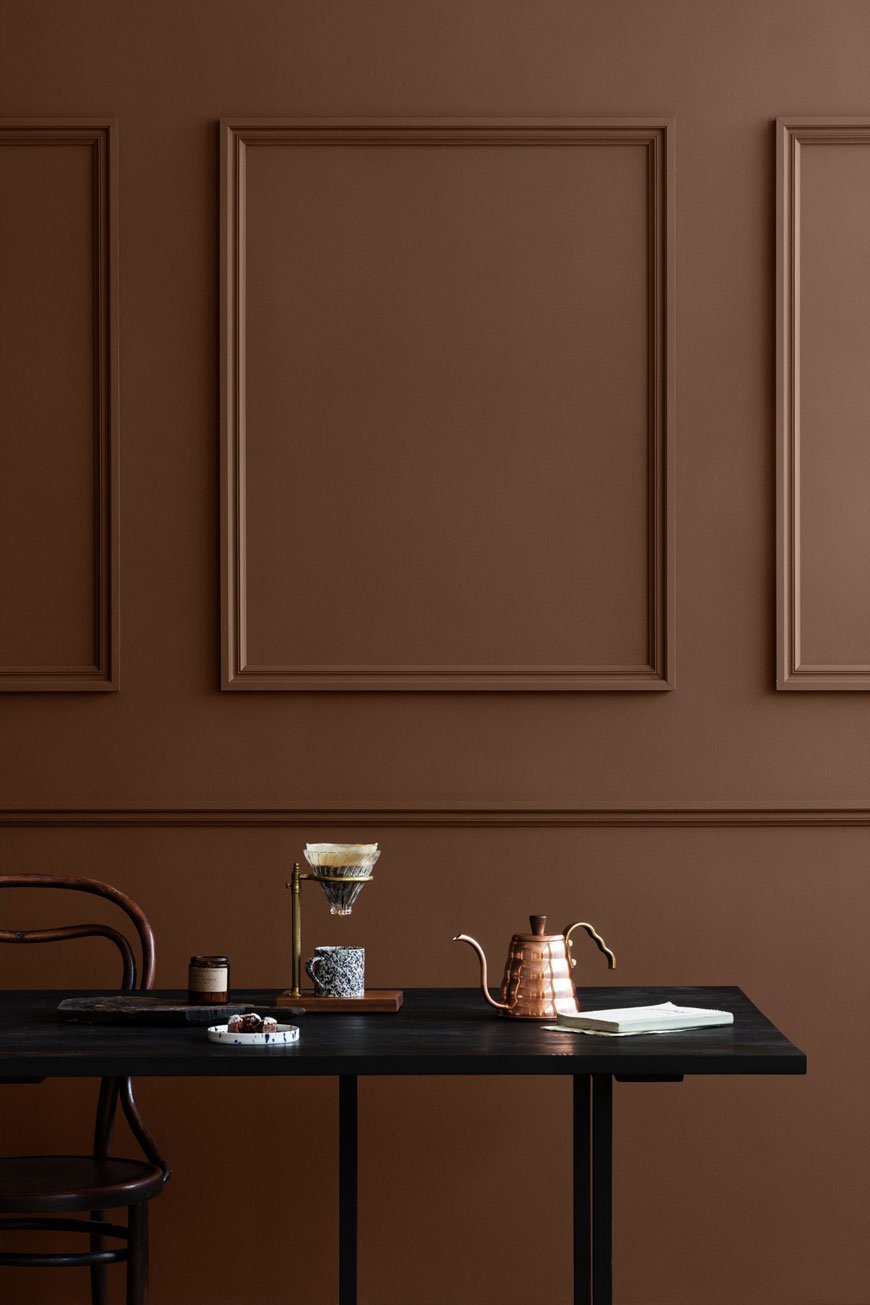 Before we delve into this post, I feel the need to air some grievances, share a bug bear or two. It is this. The common belief that a minimalist home can only be such if it's done so without colour, in black and white. That Scandinavian inspired homes are bland and boring spaces devoid of personality. It's absolutely not true. Perhaps that's an opinion based on the idea that to have a feeling of space, everything must be white? Of course, I'd be the first to put my hand up and say that yes, I still love white walls and if you're someone like me who really can't live with bright colour then it's a no-brainer that you're not going to go all out in your own home, but remember that there's a broad spectrum of muted colour you can play with. The so-called 'New 'Neutrals'. Many contemporary design names are beginning to ring the changes, merging rich colour into their latest collections and I'm all for it.So what if you're keen to make a statement but you're not sure where to start? How do you use colour so that it feels easy on the eye, retaining a feeling of space? My guide to using colour in a minimalist home should give you the confidence to give it a go.
Before we delve into this post, I feel the need to air some grievances, share a bug bear or two. It is this. The common belief that a minimalist home can only be such if it's done so without colour, in black and white. That Scandinavian inspired homes are bland and boring spaces devoid of personality. It's absolutely not true. Perhaps that's an opinion based on the idea that to have a feeling of space, everything must be white? Of course, I'd be the first to put my hand up and say that yes, I still love white walls and if you're someone like me who really can't live with bright colour then it's a no-brainer that you're not going to go all out in your own home, but remember that there's a broad spectrum of muted colour you can play with. The so-called 'New 'Neutrals'. Many contemporary design names are beginning to ring the changes, merging rich colour into their latest collections and I'm all for it.So what if you're keen to make a statement but you're not sure where to start? How do you use colour so that it feels easy on the eye, retaining a feeling of space? My guide to using colour in a minimalist home should give you the confidence to give it a go.
The Fundamentals
Before I let you drool over all this beautiful inspiration, there are a few important points you need to consider.• What will you be using the room for? Are you relaxing? Cooking? Working? The colour you choose will effect the way you feel in the space, so make sure it matches the purpose.• What sort of light does your room get? Depending on which way it faces and how much it gets will determine the tone and brightness of the shade you choose.• Live with your swatches. Once you've found a few colours you like, use as much of the pot as you can on as big a piece of paper you can find. Move it around at different times of the day to see how the light plays with it. Try it with the lighting you have too as it will change in the light of a bulb.• Work with what you have. If you have beautiful floors, what colour can you use that will bring them out? Do you have original features? Consider the furniture you have. Unless you're planning a full on re-model, make sure you choose a colour that compliments all these elements.• Block it out. Colour works best in a minimalist home when it's used in block. By that I mean using the colour across each wall (no feature walls please). It's up to you whether you paint the woodwork and skirting the same shade (I prefer to) but having the confidence to use that one colour across the whole room will have a greater impact on how it feels.• Use colour to frame and emphasise. Any noteworthy features in a room are immediately highlighted when you paint them - it might be coving or an intricate doorway. You can also frame the view into another room using paint - see how this is done below.• Leave the colour off the walls if you don't want to get into an epic painting project. Try introducing the colour through your furniture instead (I'll get on to this later on).
Pink and Blush
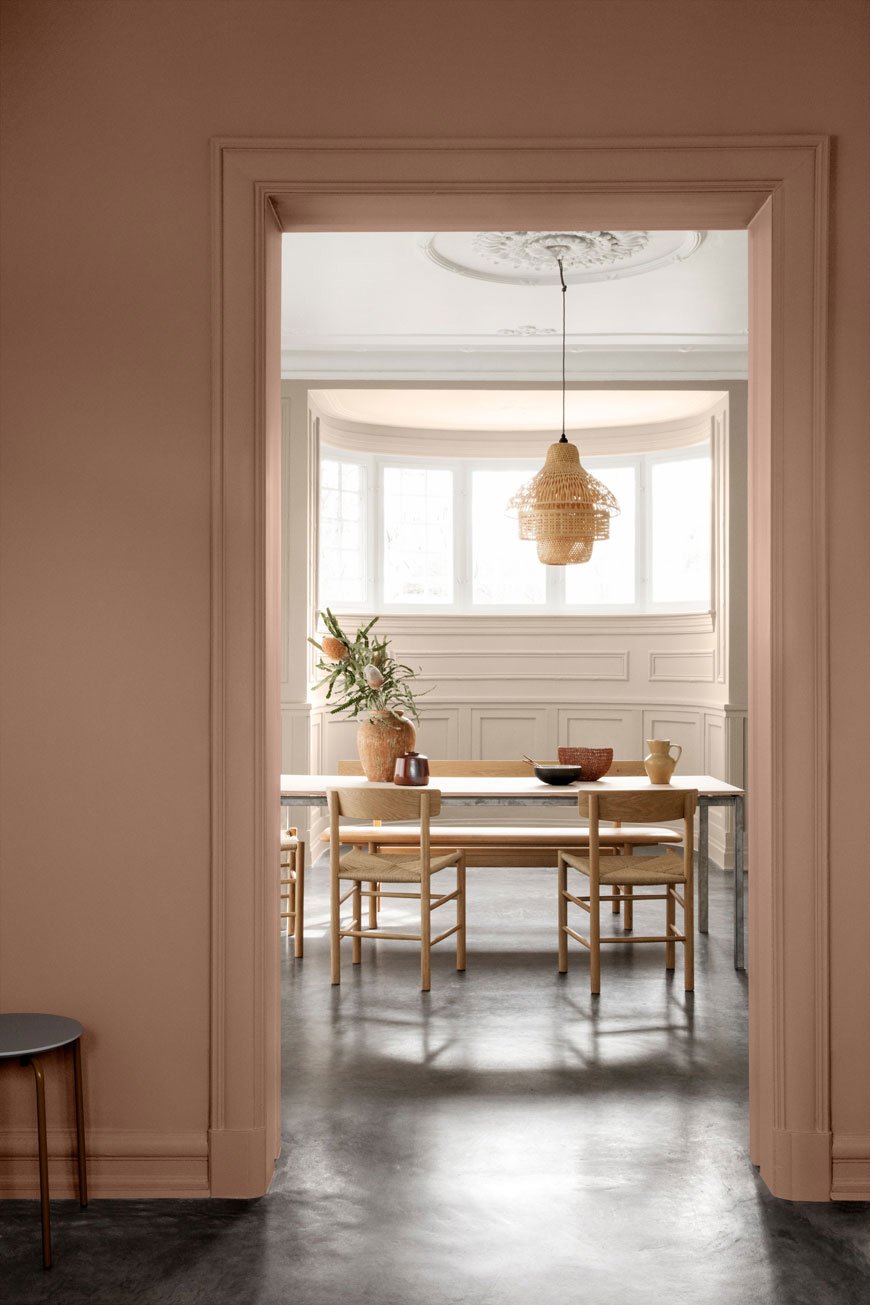 I'm loathe to call this colour range nude...because that's not my nude...but we've seen the colour pink mature in recent years. No longer considered sickly, girly or confined to kids rooms, pink is slowly working its way into our homes as a new neutral. From barely there plaster and blush to the deeper, dustier shades, pink has a calming influence and lends itself to both contemporary and traditional styles. The great thing about pink is that it can never feel too much or too over powering.Pink palettes are ideal for living spaces and bedrooms, anywhere you come to relax and unwind. It has the advantage that it's very happy to sit along side blues, greens, greys and other quiet neutrals too.
I'm loathe to call this colour range nude...because that's not my nude...but we've seen the colour pink mature in recent years. No longer considered sickly, girly or confined to kids rooms, pink is slowly working its way into our homes as a new neutral. From barely there plaster and blush to the deeper, dustier shades, pink has a calming influence and lends itself to both contemporary and traditional styles. The great thing about pink is that it can never feel too much or too over powering.Pink palettes are ideal for living spaces and bedrooms, anywhere you come to relax and unwind. It has the advantage that it's very happy to sit along side blues, greens, greys and other quiet neutrals too.
Earth, Rust and Terracotta
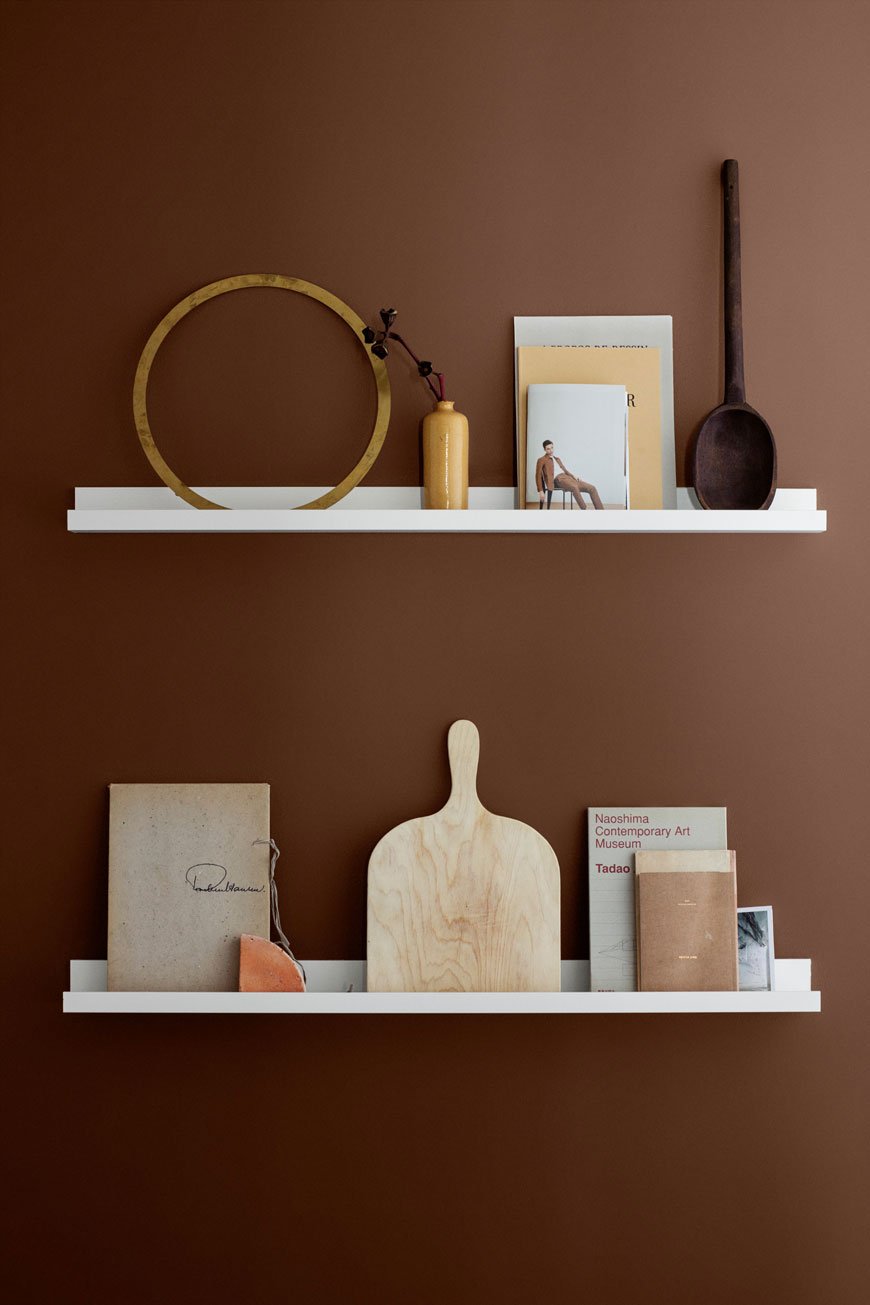
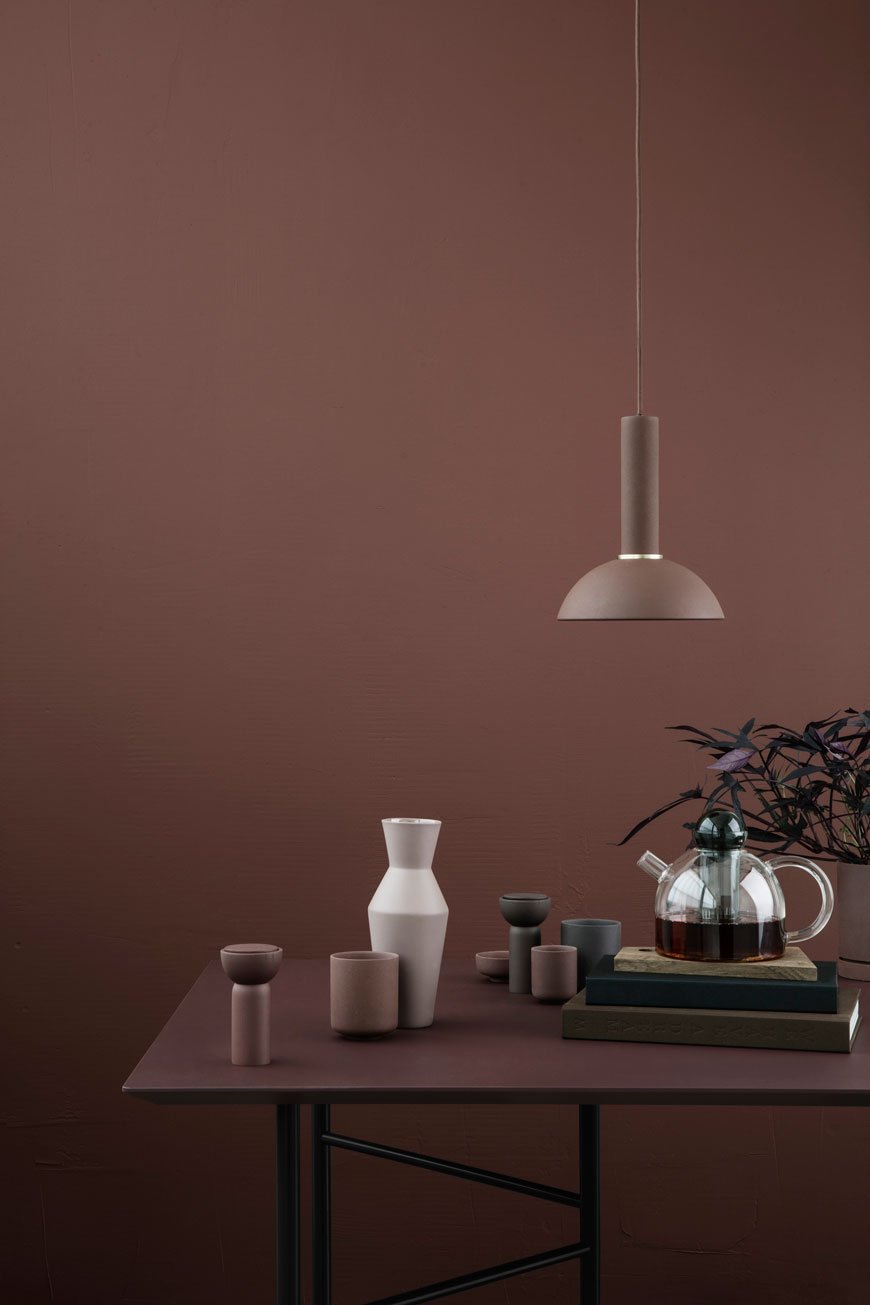 I am completely obsessed with the effect earthy tones have on a space. It's gives a real sense of depth and warmth and looks spot on with pale and black wood. From terracotta, rust and reddish brown, what was once a popular trend in the 80s is back again but without the rustic connotations. It really comes to life against black and darker shades of pink and mauve, dark blues and olive green. Use a flat matte finish on walls and woodwork and pair it with furniture with clean, contemporary lines.
I am completely obsessed with the effect earthy tones have on a space. It's gives a real sense of depth and warmth and looks spot on with pale and black wood. From terracotta, rust and reddish brown, what was once a popular trend in the 80s is back again but without the rustic connotations. It really comes to life against black and darker shades of pink and mauve, dark blues and olive green. Use a flat matte finish on walls and woodwork and pair it with furniture with clean, contemporary lines.
Beige and Greige
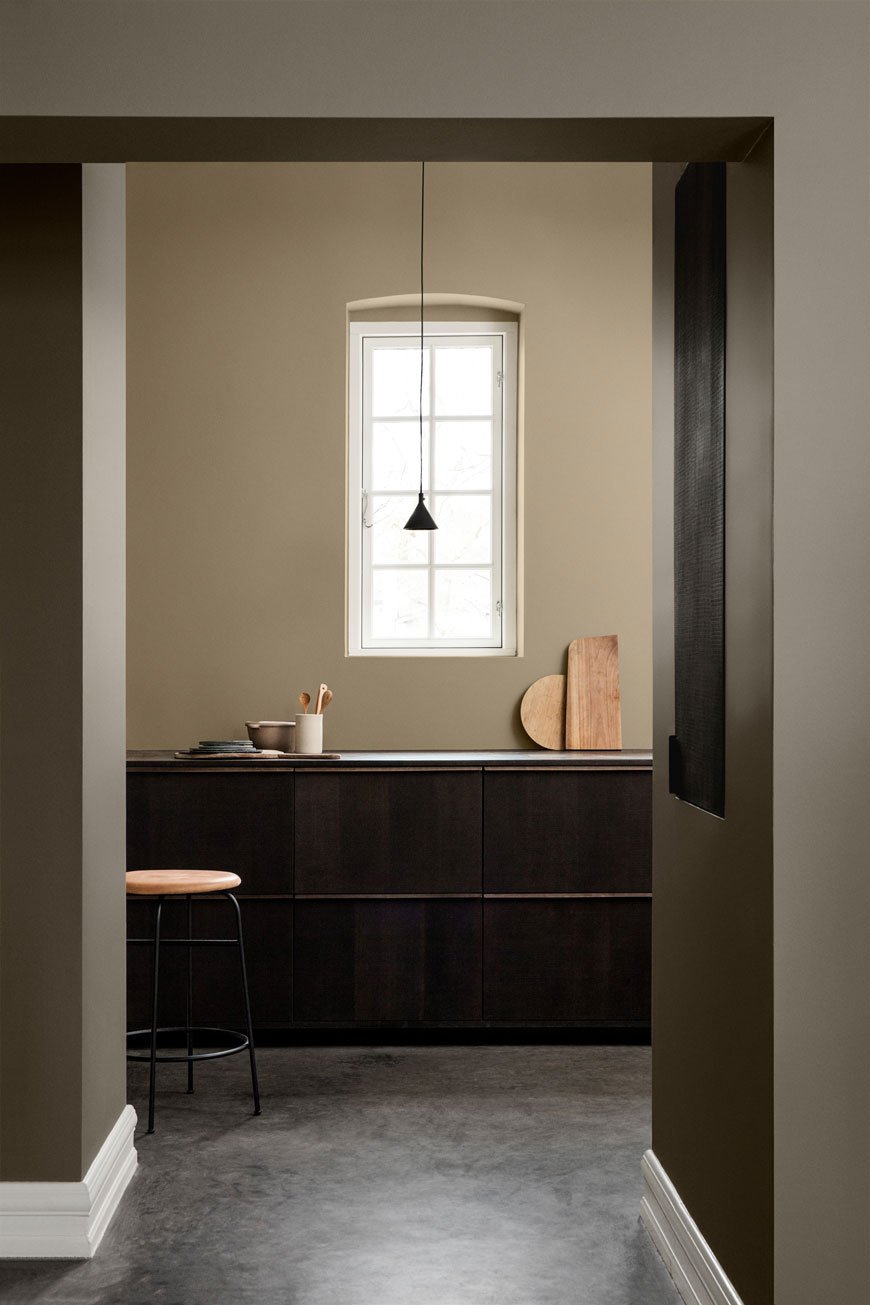 Beige is absolutely not boring. No, no, no. Magnolia? Yes. And if you're going to make everything the same flat shade from floor to ceiling, then yes too. The trick is to give it some contrast as Jotun paint have done (above). Off-set it with dark greys, black and olive green.
Beige is absolutely not boring. No, no, no. Magnolia? Yes. And if you're going to make everything the same flat shade from floor to ceiling, then yes too. The trick is to give it some contrast as Jotun paint have done (above). Off-set it with dark greys, black and olive green.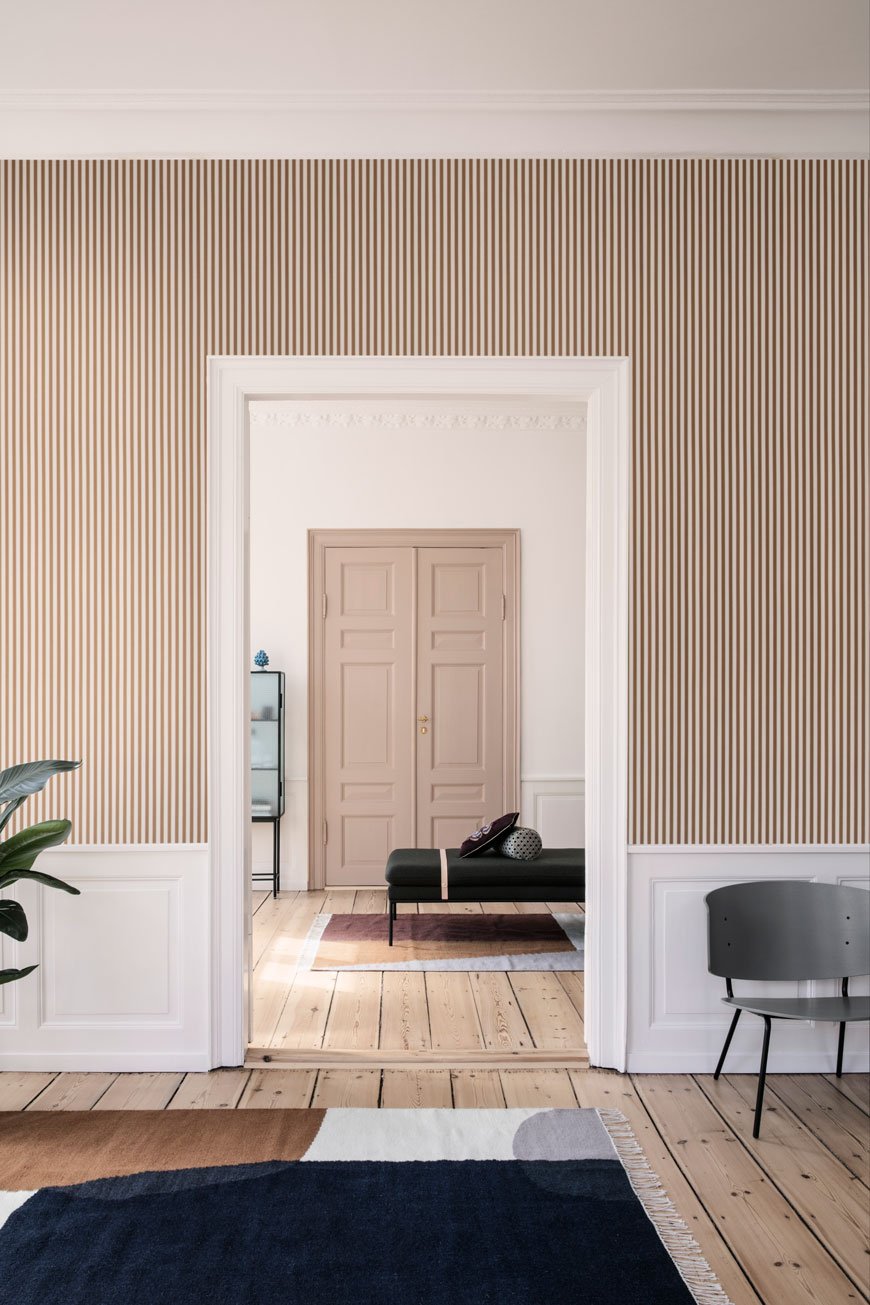 Lighten it up with pale wood and white accessories.To keep it from flattening your space, keep the interest with lots of texture - hand knotted rugs, polished concrete, rough linen, brass. Work in scale - oversized artwork, a patterned wallpaper in a similar tone or large rug with colours that compliment (above).
Lighten it up with pale wood and white accessories.To keep it from flattening your space, keep the interest with lots of texture - hand knotted rugs, polished concrete, rough linen, brass. Work in scale - oversized artwork, a patterned wallpaper in a similar tone or large rug with colours that compliment (above).
Palest and Darkest Green
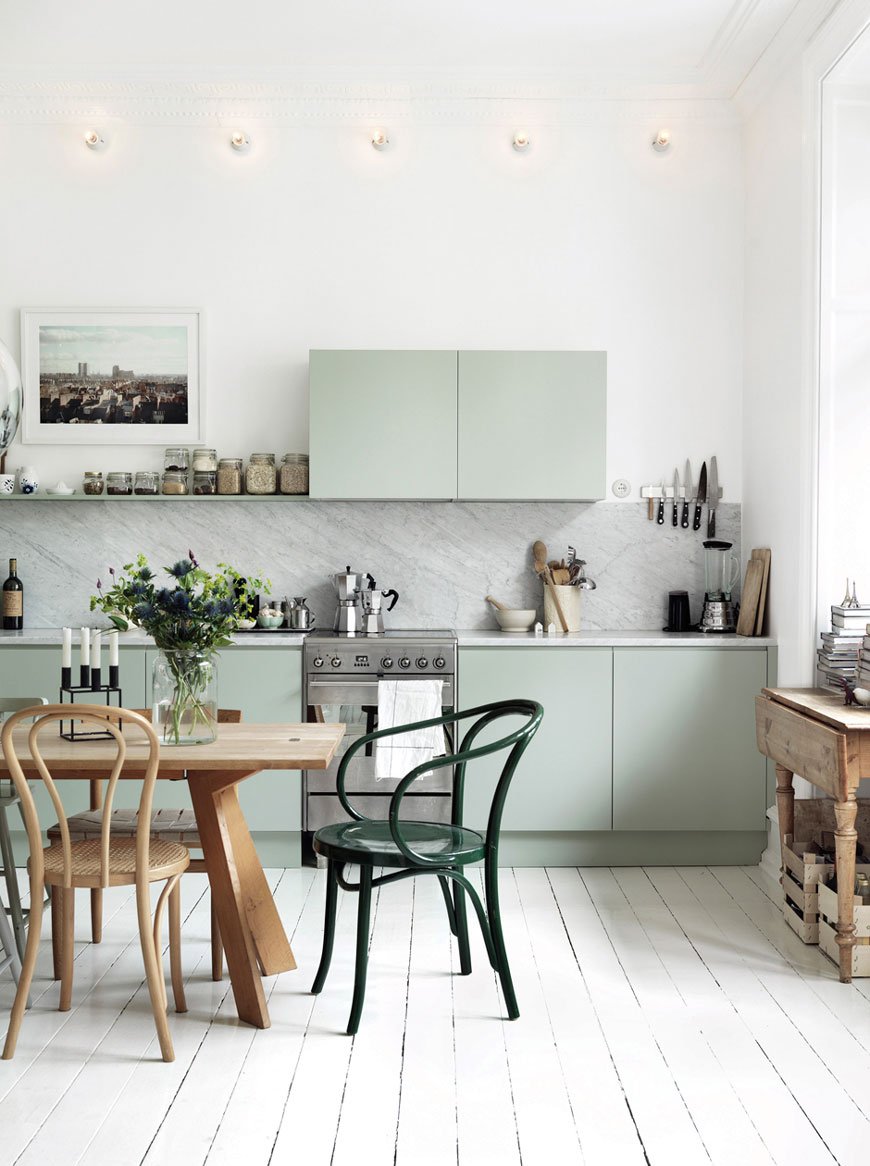 It's not all about dark colour. Lighter accents have their place too and it doesn't have to be on the wall. Adding a subtle mint green to these kitchen units makes the worktop and marble splashback a real focal point in the room. Warm wooden furniture keep the space from feeling too cold and the dark green Thonet chair echoes back to the cabinets.
It's not all about dark colour. Lighter accents have their place too and it doesn't have to be on the wall. Adding a subtle mint green to these kitchen units makes the worktop and marble splashback a real focal point in the room. Warm wooden furniture keep the space from feeling too cold and the dark green Thonet chair echoes back to the cabinets.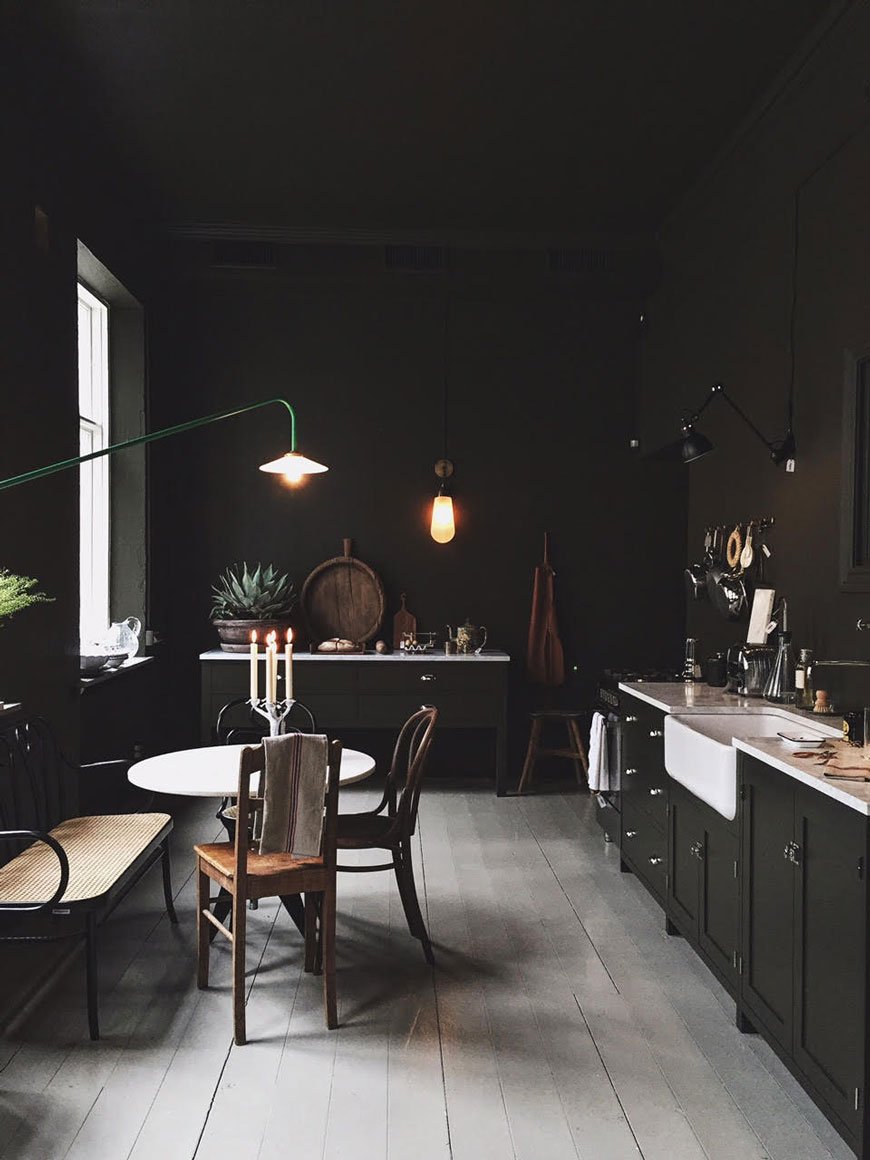 Pure, unadulterated, almost black green. Painting the ceiling isn't for everyone, sure, but this look, for those brave enough to try it, is beyond perfection. I love the way the green looks against the light flooring, how it brings out the marble in the worktops, the butler's sink, the table top. It's a fully immersive, atmospheric space and it works in every way.This beautiful shot taken from the Artilleriet Studio in Gothenburg has inspired my plans for our bathroom. Whilst I've dabbled in dark walls before, it'll be the first time I attempt the all over look in a very dark green. Yet, an old-school relative of mine came to stay and almost recoiled at the black-green swatches on our bathroom wall (it's currently yellow, by the way). "What are you planning to do with that?" she asked. I replied that I planned to paint all four walls and the ceiling with it. "But it'll make it feel dark, it'll make the room feel smaller?!" Well, yes, I want it to feel dark, that's very much the point, but it's wrong to assume a dark colour will automatically make a space feel smaller. And sometimes, the best thing for a dark room, instead of trying to fight it with light paint, is to surrender to the dark side. Trust me.
Pure, unadulterated, almost black green. Painting the ceiling isn't for everyone, sure, but this look, for those brave enough to try it, is beyond perfection. I love the way the green looks against the light flooring, how it brings out the marble in the worktops, the butler's sink, the table top. It's a fully immersive, atmospheric space and it works in every way.This beautiful shot taken from the Artilleriet Studio in Gothenburg has inspired my plans for our bathroom. Whilst I've dabbled in dark walls before, it'll be the first time I attempt the all over look in a very dark green. Yet, an old-school relative of mine came to stay and almost recoiled at the black-green swatches on our bathroom wall (it's currently yellow, by the way). "What are you planning to do with that?" she asked. I replied that I planned to paint all four walls and the ceiling with it. "But it'll make it feel dark, it'll make the room feel smaller?!" Well, yes, I want it to feel dark, that's very much the point, but it's wrong to assume a dark colour will automatically make a space feel smaller. And sometimes, the best thing for a dark room, instead of trying to fight it with light paint, is to surrender to the dark side. Trust me.
Moody Blues
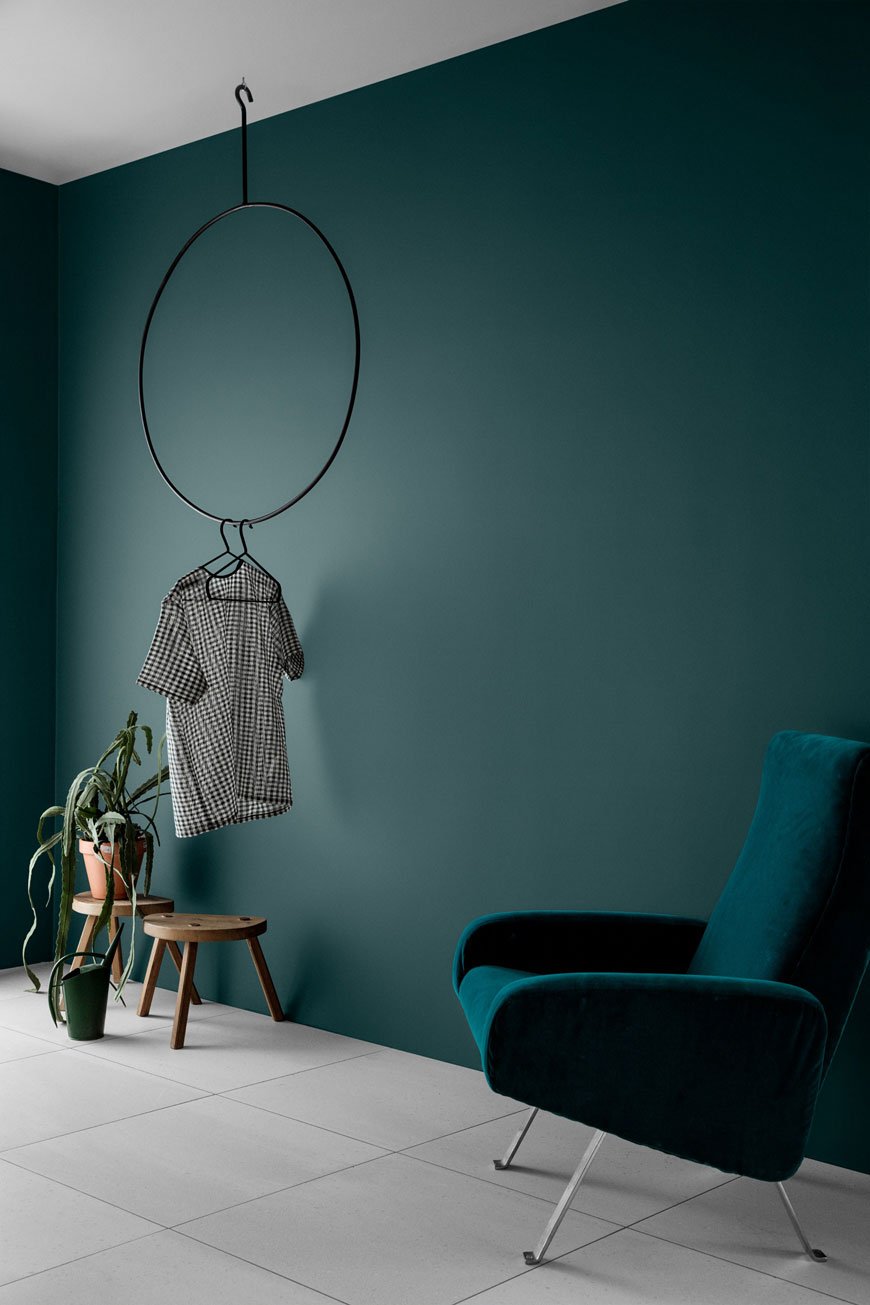 Let's not forget the impact jewel tones can have on a room, particularly inky blues and teal which is definitely having a moment. Stop it from becoming too glam with natural wood or ply, and dark, charcoal grey accents.
Let's not forget the impact jewel tones can have on a room, particularly inky blues and teal which is definitely having a moment. Stop it from becoming too glam with natural wood or ply, and dark, charcoal grey accents.
Can't Commit To Walls?
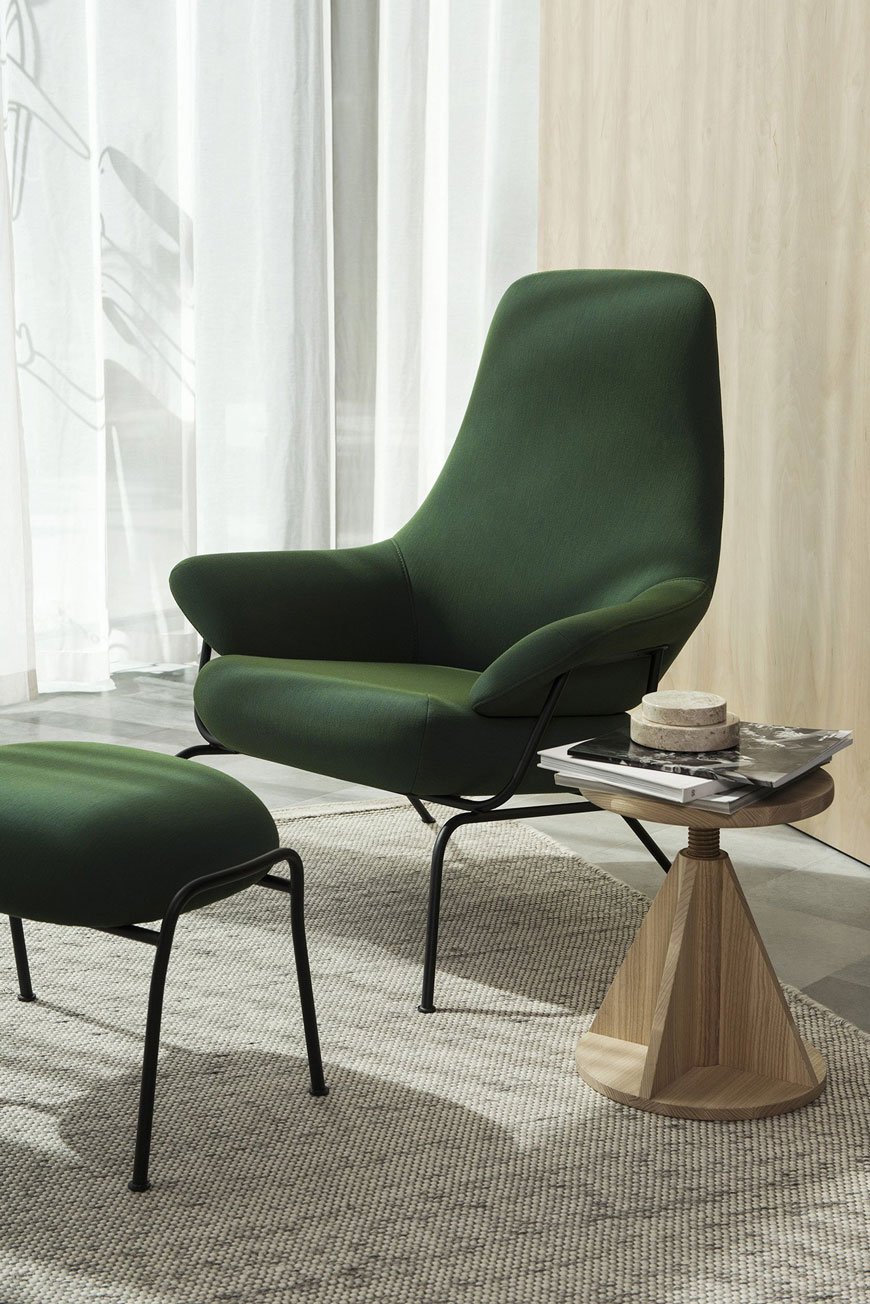 If you're not keen on or unable to paint your walls, plump for a coloured piece of furniture instead. A blank canvas of white always looks striking with a sofa, cupboard or lounge chair in an eye catching shade. It immediately draws your eye, as a feature in its own right. Tie it in with the rest of the room by connecting it with something in the same palette such as a vase or piece of artwork. Alternatively, try a complementary colour. See how I made grey-blue work on the cupboard doors in the kids room.
If you're not keen on or unable to paint your walls, plump for a coloured piece of furniture instead. A blank canvas of white always looks striking with a sofa, cupboard or lounge chair in an eye catching shade. It immediately draws your eye, as a feature in its own right. Tie it in with the rest of the room by connecting it with something in the same palette such as a vase or piece of artwork. Alternatively, try a complementary colour. See how I made grey-blue work on the cupboard doors in the kids room.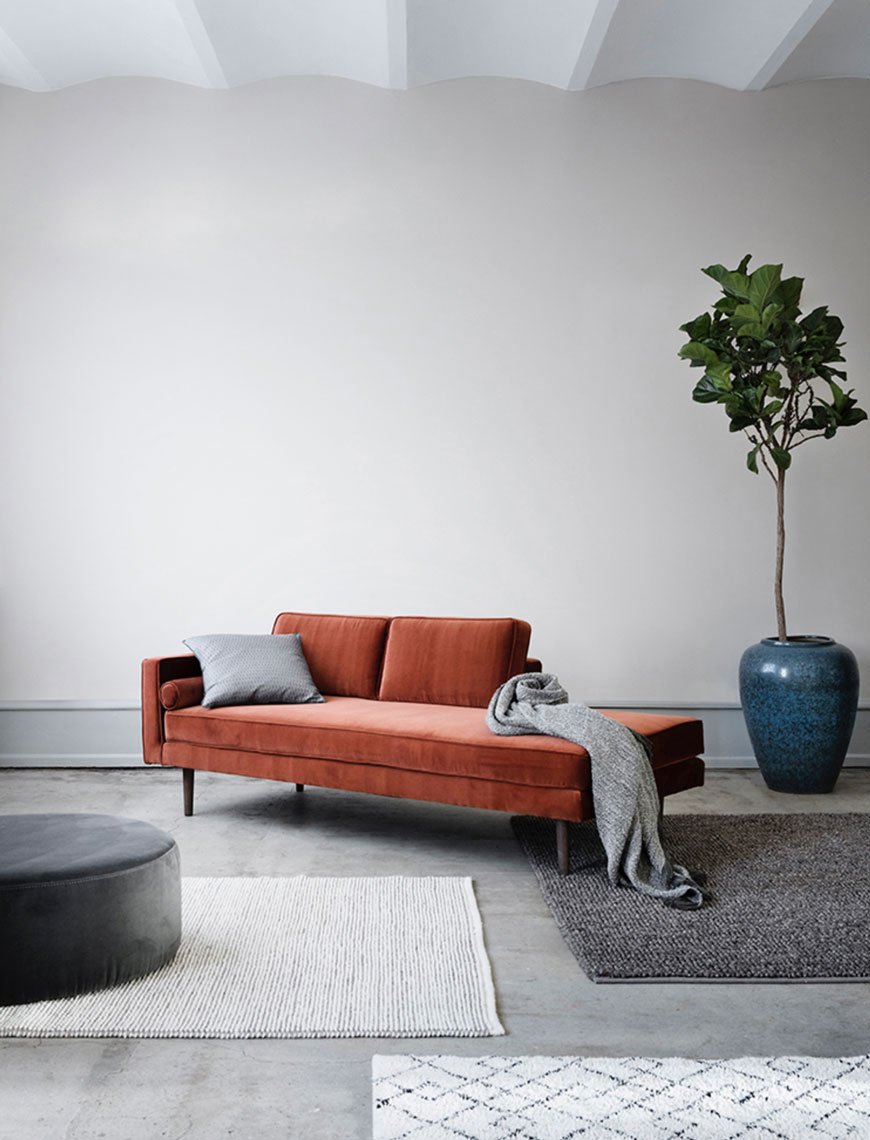 So, have I given you food for thought, maybe even changed your perceptions of Scandi, minimalist homes? And if you're tempted to make some changes in your home, the best piece of advice I can give is this. Paint can be transformative, so if making major purchases on coloured furniture isn't an option, start with some swatches and get out the brushes. Worst case scenario if you don't like the paint you've chosen? Paint over it and think again. What have you got to lose?
So, have I given you food for thought, maybe even changed your perceptions of Scandi, minimalist homes? And if you're tempted to make some changes in your home, the best piece of advice I can give is this. Paint can be transformative, so if making major purchases on coloured furniture isn't an option, start with some swatches and get out the brushes. Worst case scenario if you don't like the paint you've chosen? Paint over it and think again. What have you got to lose?